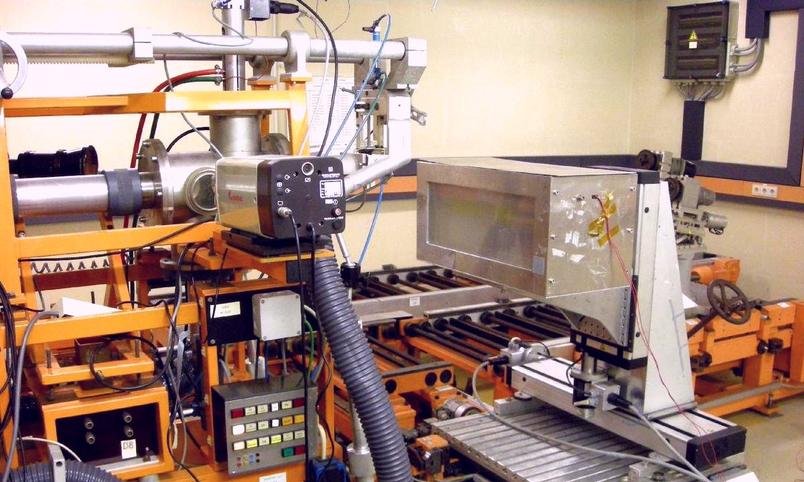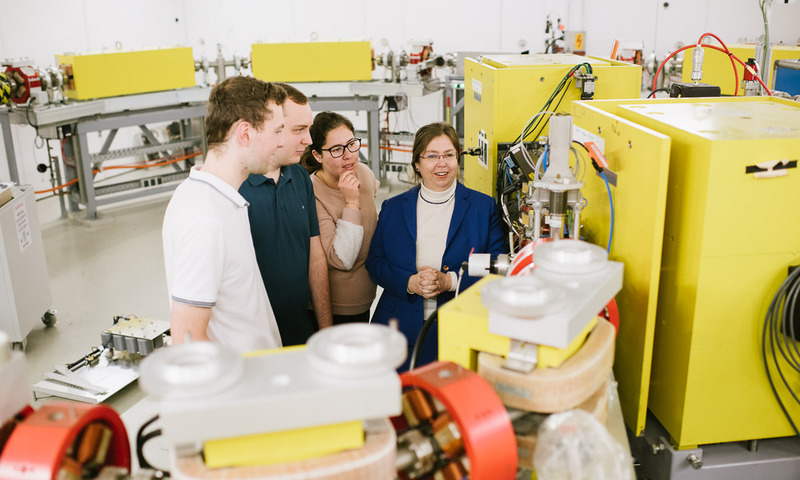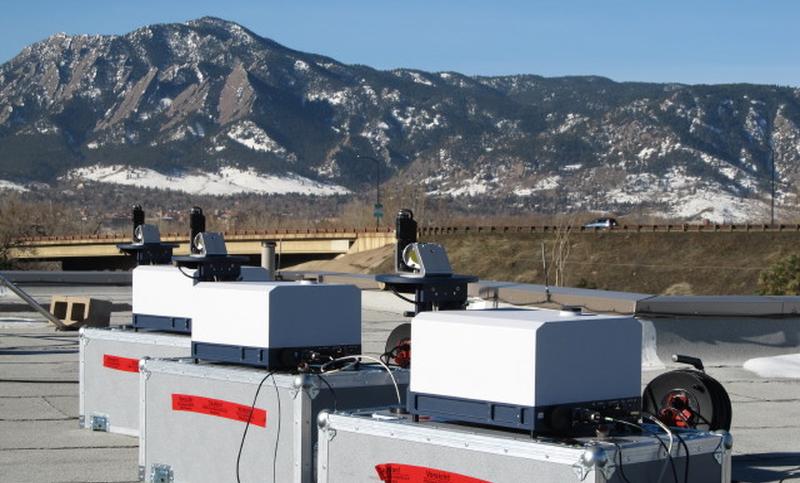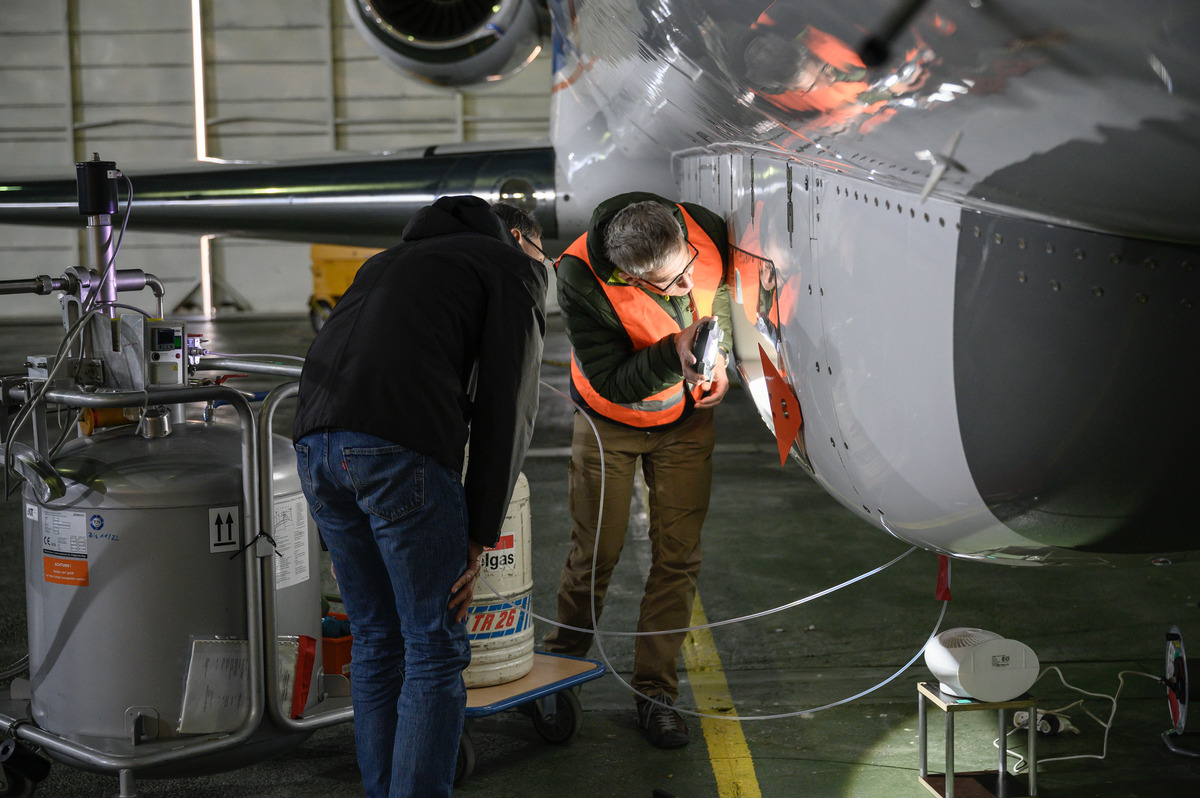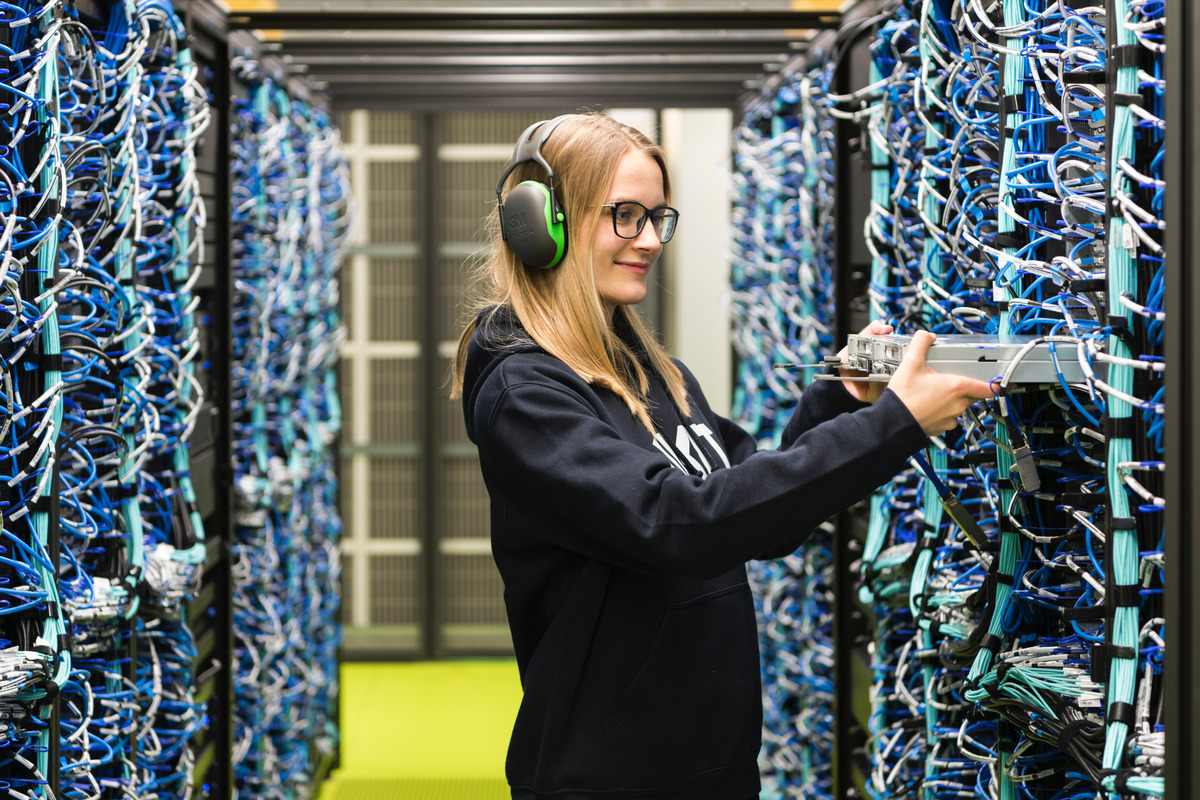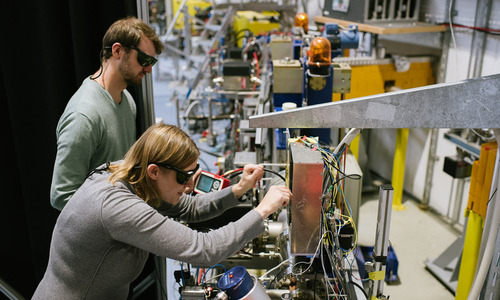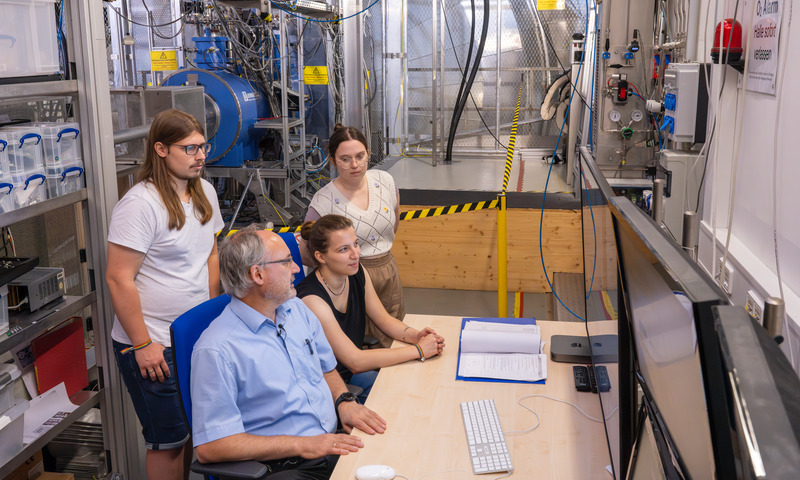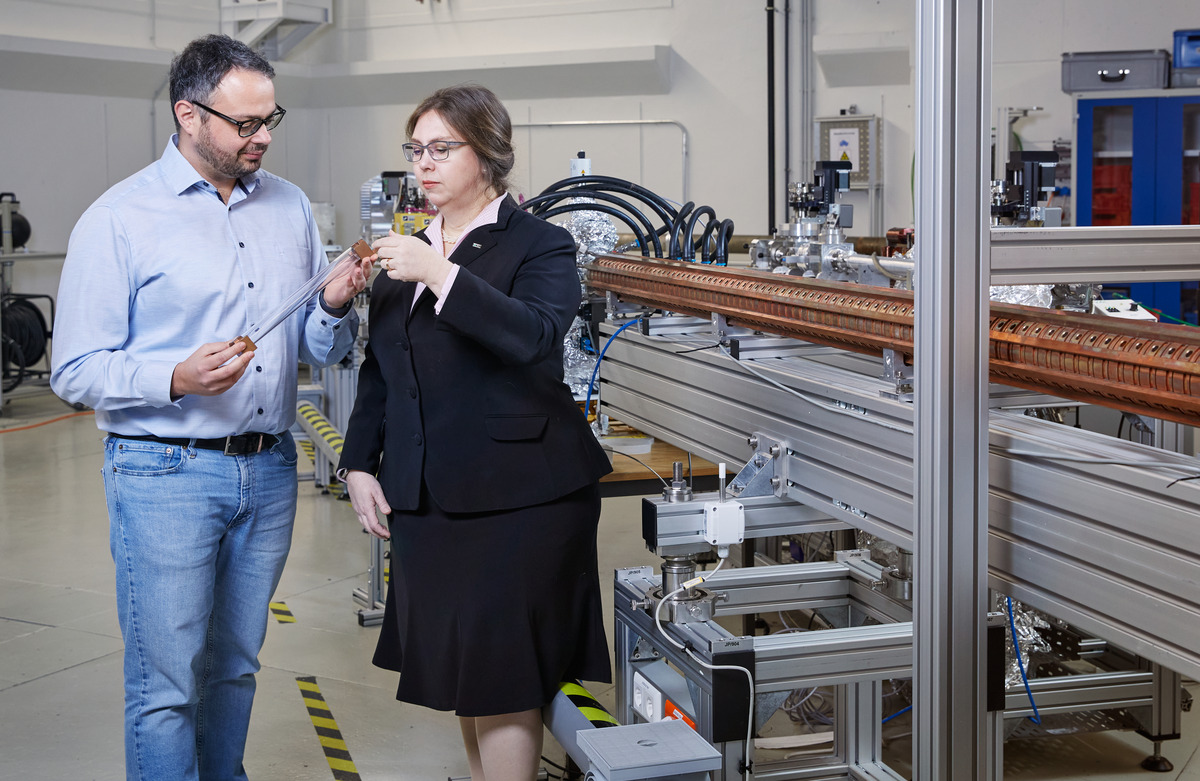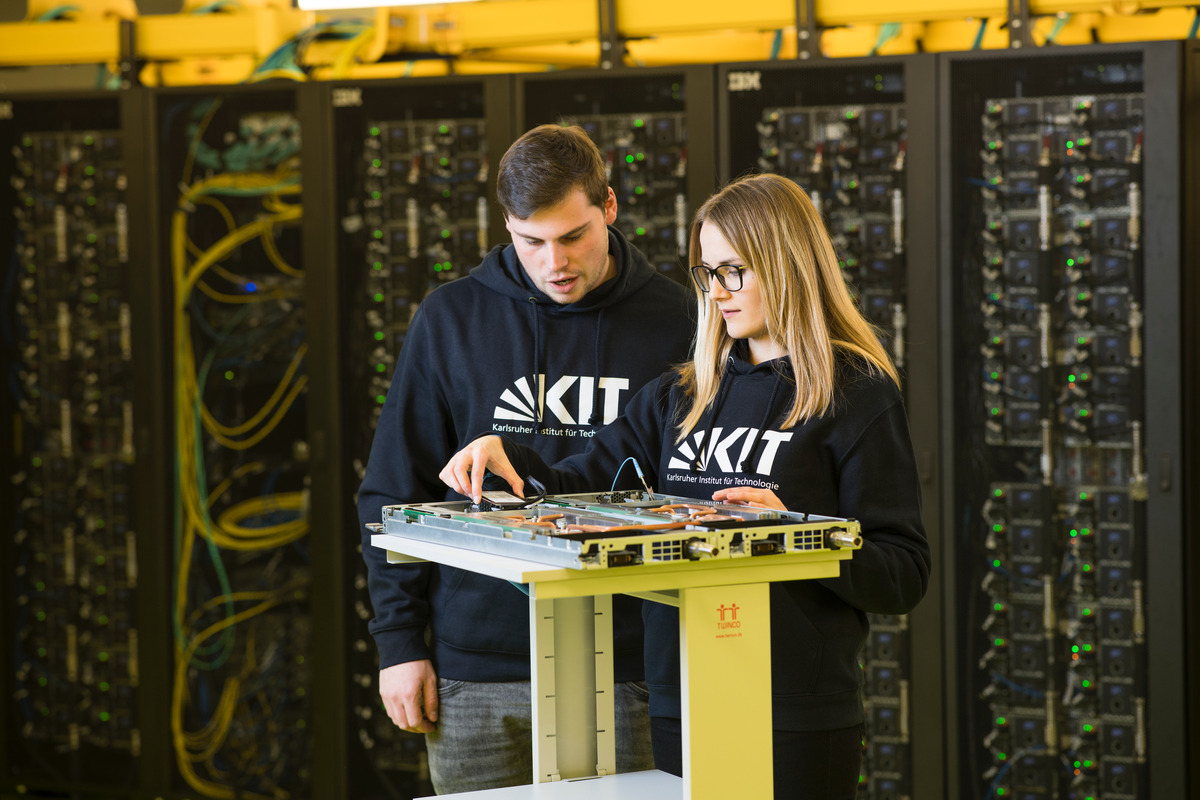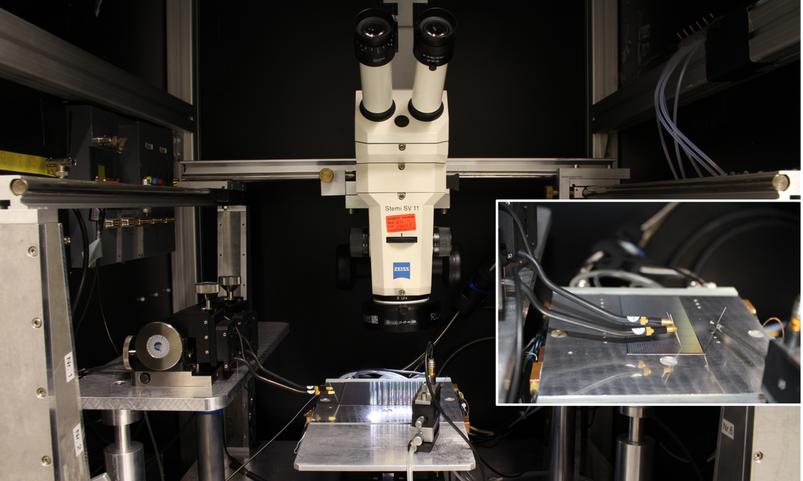AIDA
The AIDA (Aerosol Interaction and Dynamics in the Atmosphere) facility at KIT is a unique laboratory for the investigation of atmospheric processes. It comprises two simulation chambers: AIDAc, which has been in operation since 1997, and AIDAd, which went into operation in 2020. These chambers enable research into aerosol, cloud and trace gas processes under various thermodynamic conditions. AIDA plays a central role in climate research and is part of the European research infrastructure system ACTRIS, which promotes the exchange and calibration of measuring instruments.
Irradiation Center Karlsruhe
The Karlsruhe Irradiation Center at the Karlsruhe Institute of Technology (KIT) was founded in 2001 to carry out irradiation studies on silicon sensors for the CMS tracker at CERN. It provides irradiation with 25 MeV protons and X-rays to qualify detector components for the Large Hadron Collider (LHC) and the planned high luminosity phase. The center supports various research groups in irradiation planning and implementation to study the effects of high radiation fluences on new detectors.
BFO
The Black Forest Observatory (BFO) of the Karlsruhe Institute of Technology (KIT) is a high-precision geophysical measuring station in the Black Forest. Over 30 sensors, including a superconducting gravimeter and broadband seismometer, are used to record earth deformations and changes in the earth's gravitational and magnetic fields. The BFO is internationally networked and offers ideal conditions for research and testing new measuring instruments. It is available to scientific projects and the public with real-time data and also enables students and visiting scientists to carry out practical research.
bwUniCluster
The bwUniCluster 3.0 at the Karlsruhe Institute of Technology (KIT) is a powerful platform for High Performance Computing (HPC). It offers researchers from various disciplines access to a scalable computing infrastructure that is optimized for demanding scientific calculations and simulations. The cluster enables efficient computing in areas such as data analysis, modeling and simulation, and supports research in a wide range of applications, from natural sciences to engineering.
cSTART
cSTART (compact STorage ring for Accelerator Research and Technology) at the Institute for Accelerator Physics and Technology (IBPT) at KIT will provide a novel storage ring, specially developed for research into particle beam physics in non-equilibrium. The storage ring works with ultra-short electron packets and a broad momentum distribution. cSTART enables the investigation of processes beyond classical textbook physics that are currently poorly understood. For ultra-short electron bunches, FLUTE is being further developed into an injector. In addition, injection from laser plasma accelerators (LPA) will demonstrate for the first time that LPA technology is suitable as a storage ring injector. KARA's booster synchrotron currently serves as a test facility for cSTART's diagnostic systems.
The cSTART research infrastructure is available to all students in the form of summer courses, theses and excursions.
CoCCON
COCCON (COllaborative Carbon Column Observing Network) is a network of stations for the precise measurement of carbon dioxide in the atmosphere. With sophisticated measuring instruments and advanced analysis, COCCON contributes to the improvement of global CO₂ monitoring. It provides important data for climate research, emissions monitoring and the validation of satellite measurements. The network helps to better understand the sources and sinks of greenhouse gases and thus to refine climate models and forecasts.
FLUTE
FLUTE (Far Infrared Linac and Test Experiment) at the Institute for Beam Physics and Technology (IBPT) at KIT is an accelerator test facility for a wide range of accelerator physics studies. FLUTE generates ultra-short electron bunches in the femtosecond to picosecond range and produces intense terahertz radiation. The parameters of the accelerator, such as electron bunch length, charge, repetition rate, and energy, can be varied over a wide range, enabling a variety of experiments in physics, with new technologies, but also novel applications in materials science and medicine.
The FLUTE research infrastructure is available to all students in the form of summer courses, theses and excursions.
GLORIA
GLORIA (Gimballed Limb Observer for Radiance Imaging of the Atmosphere) is an innovative instrument for remote measurement of the atmosphere that combines the advantages of imaging and spectral analysis. Developed by KIT and Forschungszentrum Jülich, GLORIA enables high-resolution measurements in the infrared range to precisely monitor atmospheric processes. The instrument can be deployed in both limb and nadir positions and is used on research platforms such as airplanes and stratospheric balloons. It improves spatial resolution by a factor of ten compared to conventional instruments.
GridKA
GridKa is a powerful high-performance computing (HPC) platform of the Karlsruhe Institute of Technology (KIT), which is operated as part of the German Grid Computing Network. It provides researchers with access to extensive computing resources for demanding scientific applications in areas such as particle physics, astrophysics and climate research. Through its integration into national and international research infrastructures, GridKa supports the efficient implementation of large-scale simulation and data processing projects.
HoreKa
HoreKa (High Performance Computing Resources for Karlsruhe) is a service of the Scientific Computing Center (SCC) at the Karlsruhe Institute of Technology (KIT). This service offers high-performance computing resources for complex scientific calculations, simulations and analyses. In particular, HoreKa is aimed at research projects that rely on parallel computing and require high computing power. Users can access a scalable infrastructure to efficiently process demanding computing tasks and develop innovative solutions in various scientific disciplines.
KARA
KARA (Karlsruhe Research Accelerator) at the Institute for Beam Physics and Technology (IBPT) at KIT is an accelerator test facility that generates relativistic electrons and synchrotron radiation. KARA enables research into new accelerator technologies and the investigation of renewable energies for the operation of large infrastructures in the KIT test field KITTEN in collaboration with the Energy Lab at KIT. KARA offers a variety of testing opportunities for the development of new technologies, particularly in the fields of accelerators, lasers, electro-optics, artificial intelligence (AI), high-temperature superconducting magnets, medicine, materials science, and much more. KARA is used for both scientific and industrial applications and enables high-precision measurements and analyses.
The KARA research infrastructure is available to all students in the form of summer courses, theses and excursions.
KATRIN
The KATRIN (Karlsruhe Tritium Neutrino) experiment at the Karlsruhe Institute of Technology (KIT) is a groundbreaking research project to determine the neutrino mass. Through precise measurements of the tritium beta decay spectrum, KATRIN provides important data for deciphering the mysterious behavior of neutrinos. The experiment plays a central role in answering fundamental questions in particle physics and provides the most accurate upper limits for the neutrino mass to date.
KITTEN
The KIT Test Field for Energy Efficiency and Grid Stability in Large Research Infrastructures (KITTEN) combines Europe's largest research laboratory for renewable energy, the Energy Lab, with the Karlsruhe Research Accelerator (KARA) test facility for accelerator technologies. The aim is to operate large-scale research facilities such as particle accelerators efficiently and sustainably. The theoretical concepts developed are experimentally validated directly under real conditions with regard to physical and technical aspects - a unique combination worldwide. In this way, the KITTEN project is paving the way for energy-responsible and therefore sustainable research on a large scale.
KITTEN is available to all students in the form of summer courses, theses and excursions.
Large-Scale Data Facility
The research webpage of the Scientific Computing Center (SCC) at the Karlsruhe Institute of Technology (KIT) provides an overview of the various projects and initiatives that rely on advanced computing methods and infrastructures. SCC supports a variety of scientific disciplines through High Performance Computing (HPC), data analysis and modeling. The platform provides research institutions with the necessary computing power and infrastructure to efficiently solve complex scientific problems and develop innovative solutions.
Silicon laboratory
The silicon laboratory at the Institute for Experimental Particle Physics (ETP) at KIT specializes in the characterization of semiconductor structures, in particular with regard to the effects of radiation damage as they occur in collision experiments. It offers various measurement stations for the analysis of diodes, MOS structures and stripe sensors. The laboratory uses advanced technologies such as IR cameras for the detection of electroluminescence and readout systems for the investigation of sensors. In addition, simulations are carried out to support the measurements in order to investigate the effects of radiation damage on the materials.
Cloud radar
KIT's MIRA-S cloud radar is a mobile, highly sensitive dual-polarization Doppler radar specially developed for measuring clouds and atmospheric processes. With a range of up to 15 km and a resolution of 30 m, it enables the precise detection of echo signals. The radar is mounted on a vehicle trailer and can be used flexibly to collect data in real time. It provides valuable information for the investigation of cloud structures and their dynamics.


